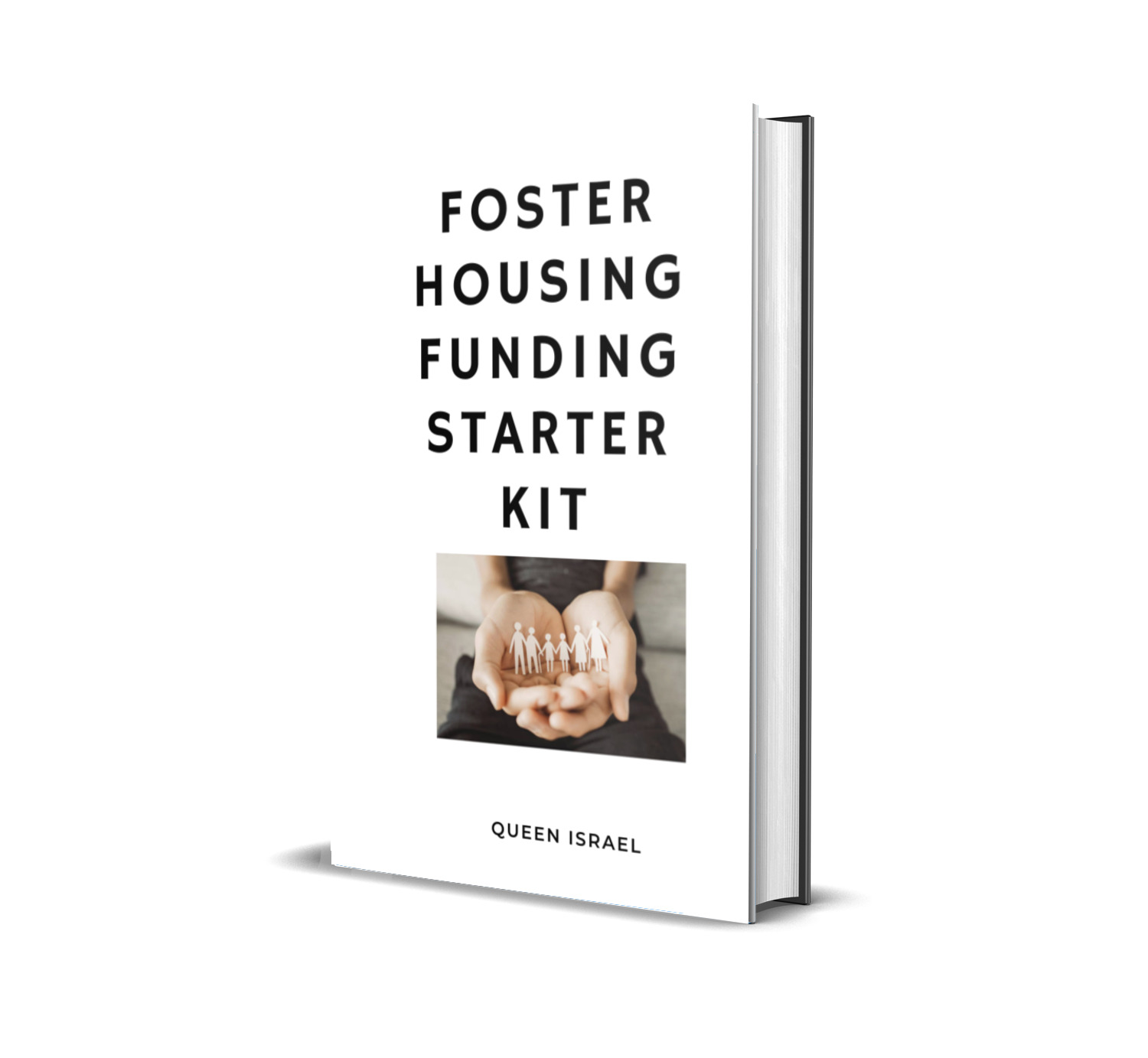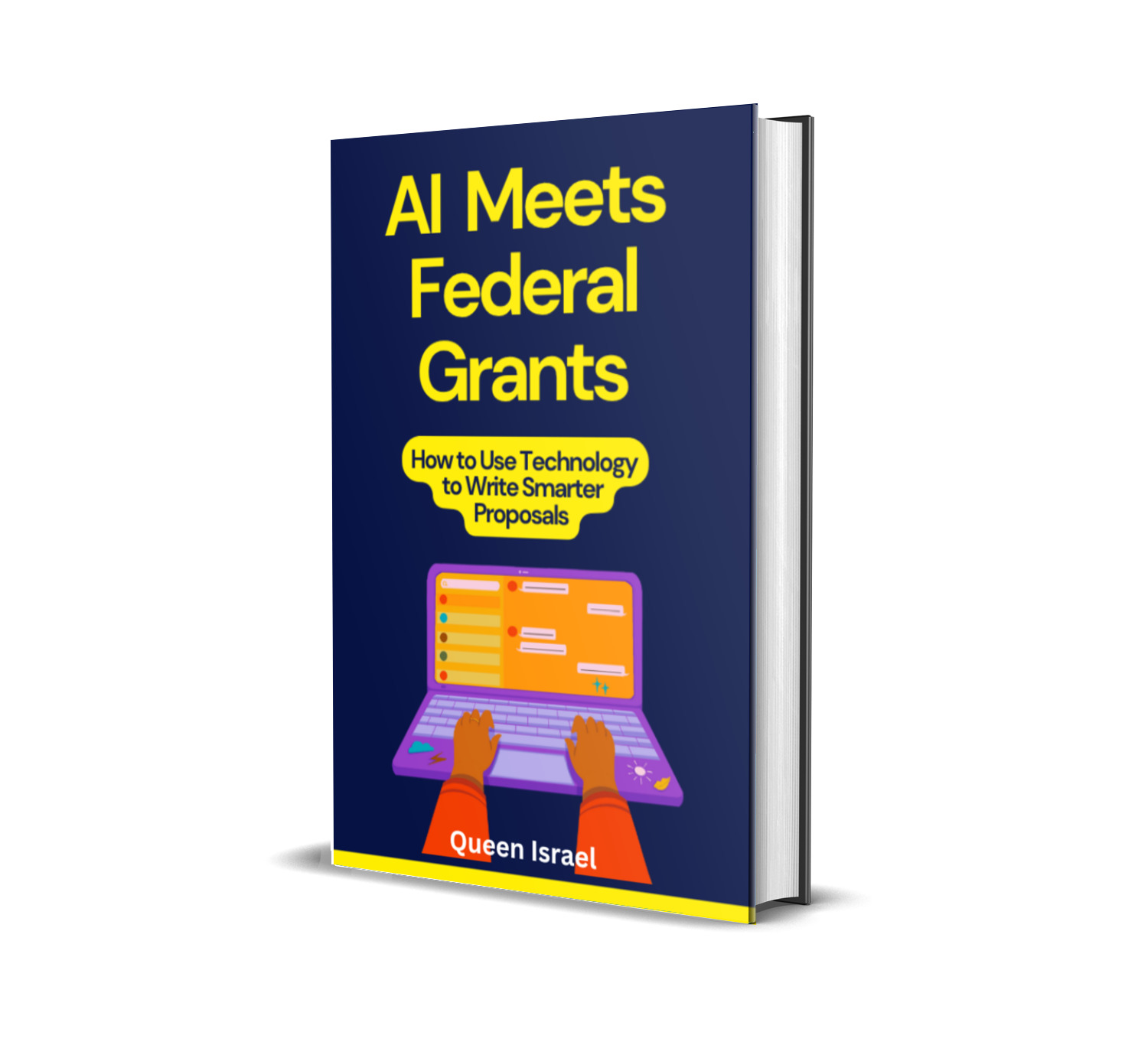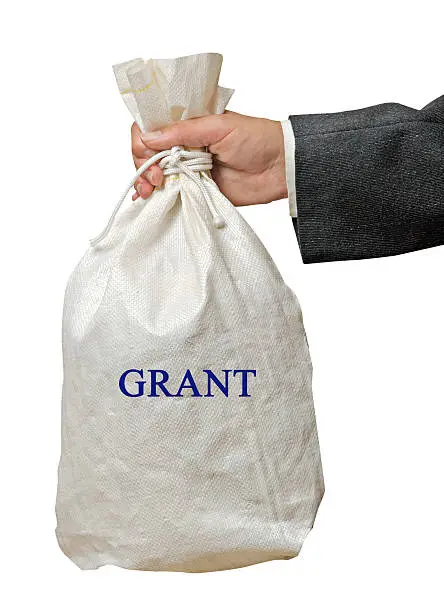Securing a grant is often seen as a key step toward fulfilling your organization’s mission or bringing your vision to life. But how exactly do you qualify for a grant?
Many organizations, especially smaller nonprofits or start-up businesses, find the process daunting. While it might seem complicated, understanding what it takes to qualify for a grant can make the process smoother.
In this post, we’ll walk you through the essential steps, key factors, and resources to help you increase your chances of qualifying for the right grant for your needs. Plus, we’ll provide tips, strategies, and tools that will help you throughout your grant application journey.
Qualifying for a grant isn’t just about filling out forms; it’s about telling a compelling story, meeting specific criteria, and building strong relationships with funders.
Let’s dive into the details and explore what it takes to successfully qualify and secure funding through grants.
Understanding Grant Eligibility Criteria
Eligibility criteria are the foundational requirements set by the grantmaker. These criteria serve as a filter to ensure that applicants align with the funder’s objectives. Here are the common eligibility components you need to understand:
- Applicant Type
Grants are typically available for specific types of organizations or individuals. For example:- Nonprofits: Many grants are exclusively for nonprofits, particularly those registered as 501(c)(3) organizations in the United States. Being a registered nonprofit is often a prerequisite for eligibility.
- Small Businesses/Startups: Some grants specifically target startups or small businesses, especially those in innovative fields like technology or clean energy.
- Individuals: There are also grants for individual entrepreneurs, researchers, artists, and educators, depending on the field.
For instance, if you’re a nonprofit, demonstrating your 501(c)(3) status through proper documentation is crucial to qualifying.
- Geographic Location
Many grants have geographic restrictions. They might support projects in particular regions, states, or countries. For example:- A grant might be available only for organizations operating within a certain county or state.
- Some grants focus on rural development, urban renewal, or specific communities.
Understanding these geographical limitations helps ensure that your project aligns with the funder’s target area. If you’re applying for a rural development grant, make sure your project details reflect how it will benefit rural areas.
- Purpose and Focus Area
Each grant has a specific focus, such as:- Education: Programs that promote literacy, STEM education, or higher learning.
- Health: Projects that improve community health, mental health services, or medical research.
- Arts and Culture: Initiatives that support artistic endeavors, cultural preservation, or public art.
- Social Services: Funding for programs that assist underserved populations, homelessness prevention, or domestic violence support.
It’s vital that your project aligns closely with the funder’s mission. For instance, applying for a STEM grant requires a project that clearly involves science, technology, engineering, or mathematics.
- Financial Requirements
Grants often come with financial requirements, such as matching funds, or specific budget allocations. Some key points to consider:- Matching Funds: Some grants require you to demonstrate a commitment by matching the amount of the grant with your own funds or other fundraising efforts.
- Budget Limits: Funders might set maximum amounts you can request or require detailed, itemized budgets.
Proper financial planning and transparency are essential. Knowing these requirements ahead of time ensures you’re prepared to meet them when you apply.
Steps to Qualifying for a Grant
Qualifying for a grant isn’t an overnight task. It involves a series of well-planned steps to ensure you meet all eligibility requirements and present a strong application. Here’s a more in-depth look at the steps involved:
- Research the Right Grant
Before diving into an application, invest time in researching available grants that align with your organization’s goals. Use reputable platforms such as:- Grants.gov – A comprehensive database of federal grants in the U.S.
- Foundation Directory Online – Lists grants from foundations and other organizations.
- GrantWatch – A subscription-based service listing grants for nonprofits, small businesses, and individuals.
Identify grants where your project fits well with the objectives and criteria. Look at past recipients to understand what types of projects get funded and tailor your approach accordingly.
- Review the Grant Guidelines
Once you find a promising grant, read the guidelines carefully. These documents often include:- Scope of Funding: What projects or expenses are covered.
- Application Requirements: Required forms, attachments, letters of support, etc.
- Evaluation Criteria: How proposals will be evaluated.
Thoroughly understanding these guidelines ensures your application is both complete and compliant, increasing your chances of success.
- Register with the Funder (if needed)
Many funders require prior registration:- Nonprofits might need to register on federal platforms like Grants.gov for federal funding.
- Businesses may need to register with SAM.gov if they’re seeking U.S. government grants.
Registering early also gives you time to troubleshoot any issues and gather necessary documentation ahead of the application deadline.
- Prepare a Solid Proposal
Your proposal is your pitch to the funder. It should tell a compelling story about why your project deserves funding. Key components of a solid proposal include:- Executive Summary: Brief overview of your project, its purpose, and the impact it will have.
- Problem Statement: Clearly define the problem you are addressing and why it’s important.
- Objectives: Specific, measurable goals for what you hope to achieve with the funding.
- Methodology: Detailed plan for how you will achieve your objectives, including timelines, strategies, and resources needed.
- Budget: A realistic and detailed budget outlining how every dollar will be used.
- Evaluation Plan: How you will measure the success of your project and ensure accountability.
Using clear, straightforward language is crucial. Imagine you’re explaining your project to someone with no background in your field.
- Provide Financial Documentation
Funders often require financial records to assess the viability and stability of your organization. Some common documents include:- IRS Determination Letter: For nonprofits to prove tax-exempt status.
- Audited Financial Statements: Demonstrating fiscal responsibility and transparency.
- Annual Budget: Providing an overview of your organization’s finances.
Having these documents ready and up-to-date can streamline your application process and build trust with funders.
- Submit On Time
Deadlines are strict in the world of grant applications. Missing one can mean missing out on crucial funding. To ensure timely submission:- Set Internal Deadlines: Aim to complete your application well before the official deadline.
- Double-Check Everything: Verify that all required documents are attached and that forms are filled out correctly.
- Backup Plans: Have a backup copy of your application in case of technical issues during submission.
Common Mistakes to Avoid
Navigating the grant application process comes with its pitfalls. Knowing what common mistakes to avoid can significantly improve your chances of success:
- Not Following the Guidelines
It might seem obvious, but failing to follow the grantmaker’s instructions is a common misstep. Each grant application is unique, and ignoring specific formatting or content requirements can lead to disqualification. Always:- Re-read the guidelines multiple times.
- Create a checklist of requirements.
- Ask for clarification from the funder if something is unclear.
- Failure to Align with the Grant’s Focus
If your project doesn’t align with the funder’s focus area, it will likely be rejected regardless of how well it’s written. Ensure:- Your project addresses the specific needs highlighted by the funder.
- You clearly articulate how your project fits within their mission in your proposal.
- Inadequate Financial Planning
A well-thought-out budget shows funders that you can manage funds responsibly. Avoid:- Overestimating costs without proper justification.
- Underestimating expenses, which could lead to project shortfalls.
- Failing to plan for sustainability after the grant period ends.
- Lack of Supporting Documentation
Missing documents like tax-exempt status proofs, financial statements, or letters of support can derail your application. Maintain an organized file of all possible documentation and:- Verify each required document is included in your application package.
- Ensure that documents are current and relevant.
- Missing the Deadline
Late applications are typically not considered. Common causes for missing deadlines include:- Starting the process too late.
- Underestimating the time required to gather documents or complete the proposal.
- Technical issues during submission.
Combat these by preparing early, setting reminders, and having contingency plans for submission.
How to Increase Your Chances of Qualifying for a Grant
While the process can seem complex, there are strategies to increase your chances of qualifying successfully:
- Build Relationships with Funders
Relationships matter. By engaging with potential funders:- You gain insights into what they value.
- You establish trust, making them more likely to consider your application.
- You’re more informed about upcoming opportunities.
Consider attending workshops, webinars, or conferences hosted by grantmakers. Reach out via email or phone to introduce yourself and inquire about their priorities. A personal connection can often tip the scales in your favor.
- Stay Organized
Managing multiple grant applications and deadlines can be challenging. Staying organized includes:- Keeping a calendar of submission deadlines.
- Using project management tools like Trello, Asana, or Google Calendar to track tasks.
- Maintaining a repository of frequently used documents and templates.
Organized record-keeping ensures that you can quickly assemble information for future applications and meet deadlines without stress.
- Write a Compelling Narrative
Your proposal should not just list facts—it should tell a story. A compelling narrative:- Highlights the human element of your project.
- Makes a case for why your project matters.
- Shows the direct impact on the community or field.
For instance, instead of just stating statistics, share a brief story of an individual or community that will benefit from the grant. This personal touch can resonate with reviewers.
- Follow Up
After submitting your grant application, consider following up:- Confirm receipt of your application with the funder.
- Politely inquire about the review timeline.
- Ask if they require any additional information.
A follow-up shows diligence and continued interest without being pushy. It also keeps you informed about the status of your application.
Data & Stats on Grant Application Success Rates
Understanding the landscape of grant success rates can provide perspective and inform your approach. Here are some insights based on recent data:
- Foundation Grants: According to Candid, success rates for foundation grants can range from 30-40% for nonprofits, although this varies by foundation and grant size. Foundations that focus on fewer but larger grants often have lower success rates due to intense competition.
- Federal Grants: Success rates for federal grants are generally lower, around 10-20%, due to the high volume of applicants and stringent requirements. For some highly competitive federal programs, rates can be even lower.
- Correlation with Compliance: Studies show that applications that meticulously follow guidelines and clearly align with funder priorities see a significantly higher success rate. Nonprofits that invest in professional grant writing or attend training sessions often report improved funding outcomes.
By understanding these statistics, you can set realistic expectations and continually refine your approach for better results.
Real-Life Example: A Success Story
Consider the story of a small nonprofit focused on STEM education for underserved communities. Initially overwhelmed by the grant application process, they took the following steps:
- Targeted Research: They identified a foundation grant specifically aimed at improving STEM education in rural areas.
- Engaged with the Funder: Before applying, the nonprofit contacted the foundation to discuss their proposal and gather feedback.
- Met All Eligibility Requirements: They ensured their nonprofit status, geographic focus, and project details matched the grant criteria.
- Crafted a Compelling Proposal: Their application highlighted success stories from past educational programs, backed by data showing increased student engagement and improved test scores.
- Followed Up: After submitting, they checked in regularly to show commitment.
Their meticulous preparation, alignment with the grant’s focus, and dedication paid off when they secured the funding. The grant helped them launch a new computer lab and training program, leading to a 50% increase in student participation in STEM activities within the first year.
Final Thoughts
Qualifying for a grant is a combination of thorough research, careful preparation, and strategic communication. By understanding eligibility criteria, following a structured process, avoiding common pitfalls, and leveraging the strategies outlined above, you’ll be better positioned to secure the funding you need.
Remember, qualifying for a grant is just the first step. To maximize your chances of winning grants and sustaining long-term success, continuous learning and improvement in grant writing skills are vital.
If you’re looking to boost your success rate with grants, subscribe to the Grant Writing Academy Newsletter today! By subscribing, you’ll gain access to:
- Expert Tips and Strategies: Insider knowledge on how to craft winning proposals.
- Templates and Tools: Ready-made templates, checklists, and budgeting tools to simplify your process.
- Step-by-Step Guidance: Walkthroughs for specific types of grants.
- Success Stories and Case Studies: Real-world examples to learn from.
- Ongoing Support: Updates on new funding opportunities, workshops, and webinars.
Subscribing is a great way to stay informed and gain the confidence you need to navigate the complex world of grant applications.
Ready to enhance your grant writing skills and increase your funding success?
Subscribe to the Grant Writing Academy Newsletter now and start your journey towards mastering the art of grant writing!
Stay proactive, stay organized, and best of luck with your grant applications!
Additional Resources and Support
a) Expand Your Knowledge
The grant writing field is always evolving. Keep learning and improving your skills to stay competitive.
Recommended Resources:
- Request for Proposal Success: How to Write Proposals That Win: Learn the techniques and strategies to create standout proposals.
- Tech Startup Funding Secrets: Navigating Grants for Maximum Growth: Perfect for those in the tech sector looking to leverage grants for scaling.
- Grant Proposal Guide for Environmental Projects: Tailored for environmental initiatives seeking to secure impactful funding.
- The Ultimate Guide to Federal Grant Applications: Techniques for Success: Master the complexities of federal grants with actionable insights.
Explore More Books Here
b) Invest in Expert Guidance
Want to fast-track your growth and achieve even more success?
Join one of our mentorship programs for tailored advice and support:
Mentorship Programs:
- 3-Month Mentorship: The Foundation Builder: A short-term plan to refine your grant writing skills and win your first (or next) grant.
- 6-Month Mentorship: The Proposal Pro: Dive deeper into strategies, proposal reviews, and funding plans.
- 1-Year Mentorship: The Funding Champion: Build long-term success with comprehensive guidance, unlimited reviews, and exclusive resources.
C) Book a One-on-One Consultation
Sometimes you just need personalized advice to tackle challenges or fine-tune your strategy. Let’s work together to solve your unique grant writing challenges.
Book a Consultation Call Here
Links:
To maximize your grant qualification and application success, leverage available resources:
- Grants.gov – Your go-to site for finding and applying for federal grants in the U.S.
- Candid (formerly Foundation Center) – Offers comprehensive data on foundations, grants, and funding opportunities.
- GrantSpace – Provides tools, training, and resources for nonprofits seeking funding.
- SAM.gov – For businesses and nonprofits looking to register for U.S. government contracts and grants.
- Local Libraries and Universities – Many local institutions offer workshops or have databases and experts to help you with research and writing.






